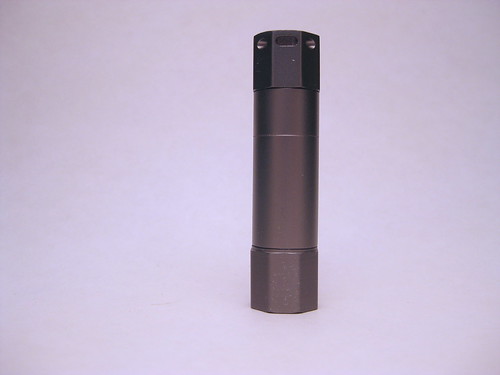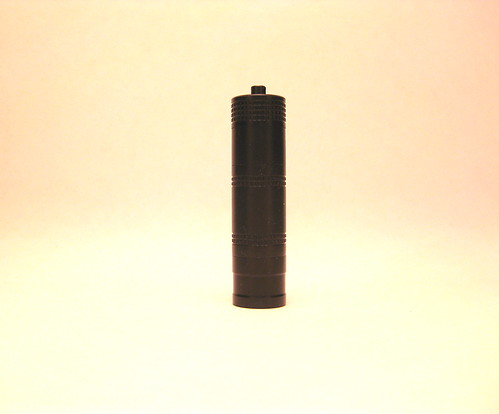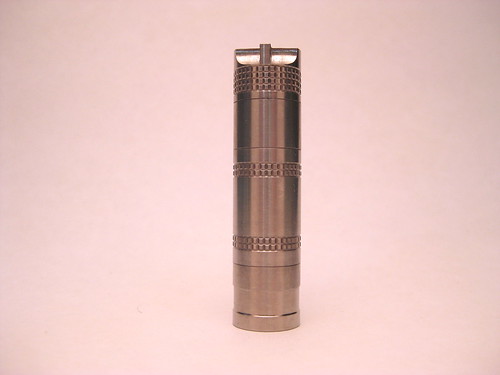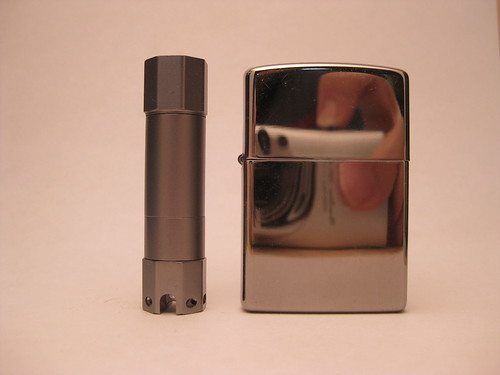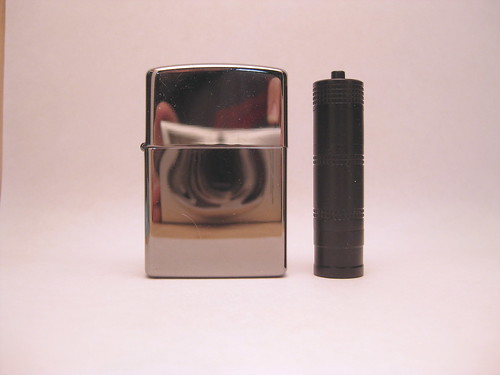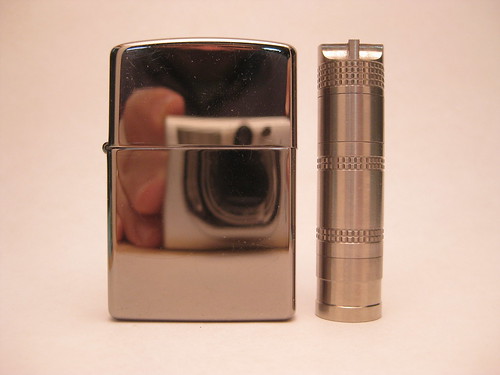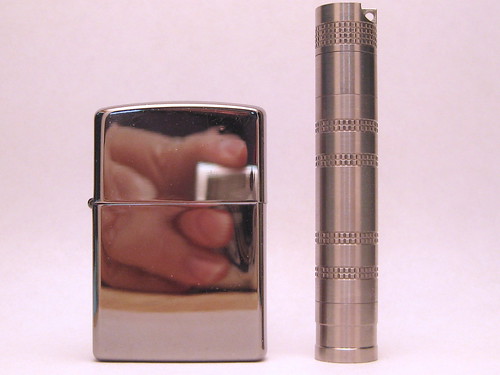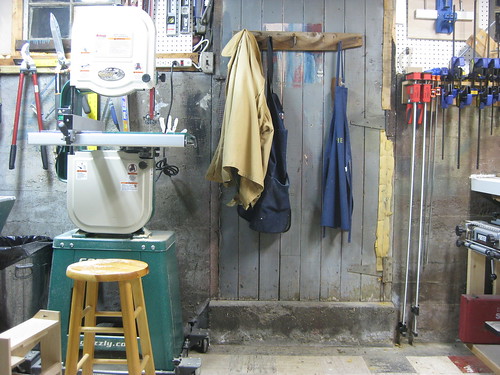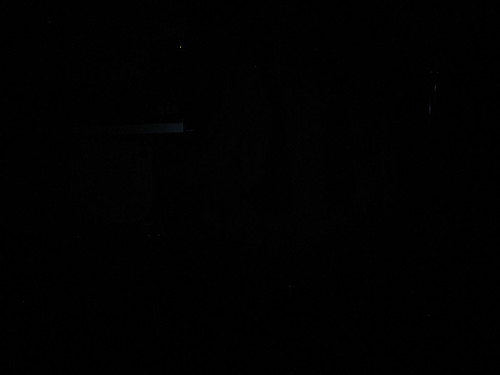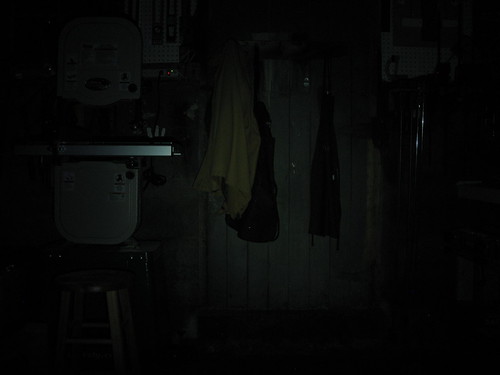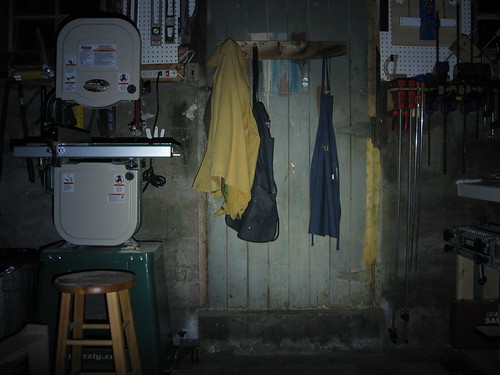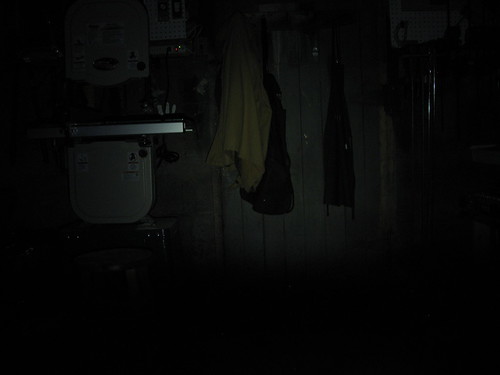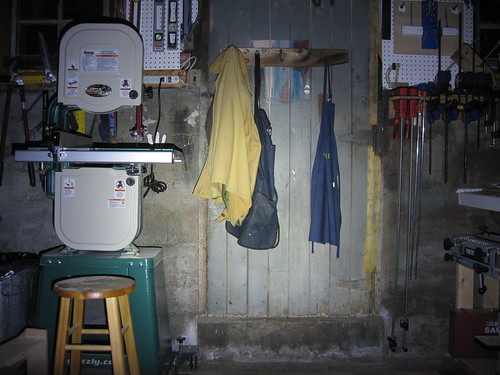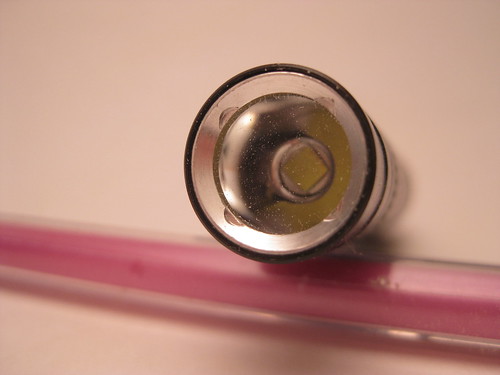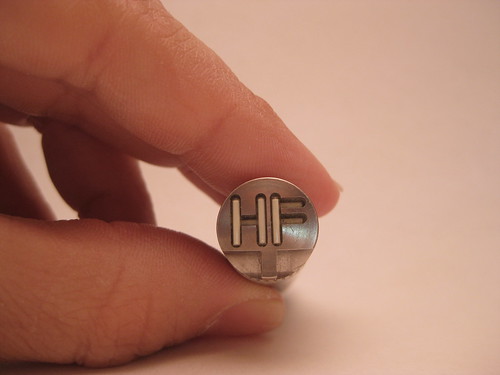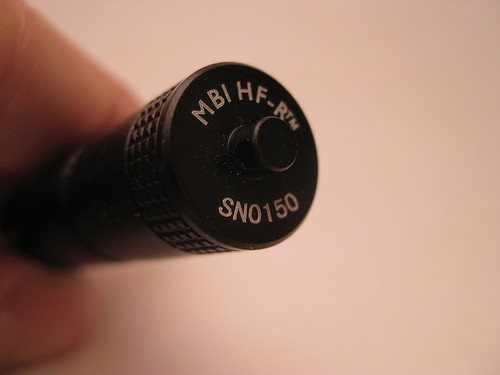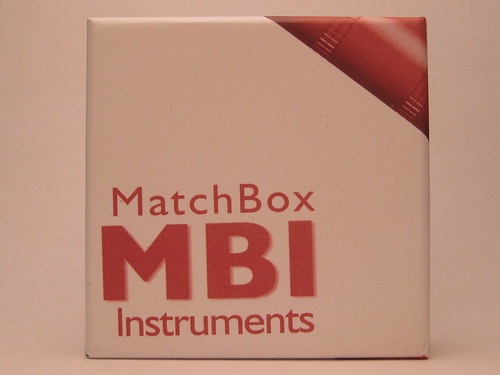MBI HF Series Review
When MBI sent the HF series of lights to me for review, opening the package was like a flashoholic's Christmas, one amazing jewel of a light after another. A few days later though I realized that this much tech and gear would require a monumental amount of work to thoroughly test and document the staggering array of things these flashlights can do. A month and a week later I can tell you this is the most complex, thorough review I have ever done, so thorough in fact that I am breaking into two parts--the flashlights and the accessories. First up, the HF, HF-R keychain, and HF-R Ultimate Tritium. Then, on Friday, the HF body tube and the Zoom Head.
All that work was worth it though because the MBI HF is part of the wave of next gen lights, like the Peak Eiger, that is redefining what we get in a flashlight. In particular the UI on the HF flashlight series is like nothing else on the market. Simply put, it is the best UI I have ever used, a game changer, and something that MBI should look to patent AS SOON AS POSSIBLE. The batteries it uses are rechargeable only batteries, but a charger is readily available and the reward for weirdo batteries is a high that blows your retinas and everything in the product class away. Like the Eiger, the HF is really a flashlight system, much more than a mere flashlight.
This review was a ton of work, but it was worth it. This is the future.
Here is the HF-R Ti Edition review sample:
Twitter Review Summary: If you missed the Aeon Mk. II run, go buy one of these. They are among the best EDC flashlights in the world today, regardless of price.
I am going to review the lights as follows: I will give three scores, one for the HF, one for the HF-R Keychain Edition (hereinafter "HF-RK"), and one for the HF-R Ti Edition ("HF-RT").
Design: HF: 2; HF-RK: 2; and HF-RT: 2
The HF is actually my favorite form factor of the three, but all three are well above average in terms of design. They are simple tubes with good places to grip for turning on the light. The HF has a hex shaped head and tail preventing it from rolling, while the two HF-Rs are round with knurling. All three lights have that just right ratio between the length and the diameter of the body tube.
The performance numbers here are mind blowing and a hint as to how revolutionary these lights really are. The lumens:weight on the HF is 472, the lumens:weight on the HF-RK and T is 566. The lumens:weight on the HF-R in aluminum is a staggering and record holding 1132 (the Al verison weighs 15 grams or .52 ounces WITH the battery). The total lumens output for the HF is on medium at 3600, and it is also on medium for the HF-Rs is the exact same.
Here are some size comparisons (all three lights are roughly as tall as a AA battery, but slightly thicker around):
HF:
HF-RK:
HF-RT:
HF-RT with AAA body tube:
Here are some size comparisons (all three lights are roughly as tall as a AA battery, but slightly thicker around):
HF:
HF-RK:
HF-RT:
HF-RT with AAA body tube:
Fit and Finish:HF: 2; HF-RK: 2; and HF-RT: 2
After reviewing the CoreTi light from MBI I realized that this is a company that knows how to do fit and finish. The HFs are all exemplars of polished perfection, literally in the case of the HF-RT. The emitter is perfectly centered on all three, the lens are clean, clear, and scratch free. The threads are smooth and well-cut. All three are excellent.
The HF-RT is a step above the other two though. This is a light that hangs with the best customs out there in terms of polish. The way the HF logo is formed from tritium inserts is quite impressive. Not only is it a good idea, it is brilliantly executed. This is some damn fine machining.
Grip:HF: 2; HF-RK: 2; and HF-RT: 2
All of these are tiny lights, but the dimensions aren't too bad. They are relatively thin, but they have a enough length to give you something to hold on to. They are thin, but not spindly. They are small but not needles in a haystack. The HF is a little better because the hex shaped ends make turning the light on a bit easier, but the knurling on the HF-Rs is not bad at all. All three are excellent, with the HF being just a bit ahead.
Carry:HF: 2; HF-RK: 2; and HF-RT: 2
Coin pocket, regular pocket, shirt pocket, bag, that little dish in front of your cup holders in your car, this light can be stowed anywhere and everywhere. If it can hold a AA battery it can hold this light. I love tiny lights and this the primary reason why.
Output: HF: 1; HR-RK: 2; HF-RT: 2
Behold, I have captured lightning. I have always wondered what would happen if I went back in time with a flashlight to like the Middle Ages. I am fairly certain that if I had enough batteries to last, I would be the king of a small country. The light, plus the fact that I alone would recognize the need to wash my hands, would make me a Superman. Funny thing is, though, that this light is so small and so bright that it would have been inconceivable even five years ago among flashoholics. As the performance numbers above indicate--this is something of a different magnitude. 600 lumens in a light the size of a AA battery is almost as impressive to the flashas a flashlight would be to the folks of King Arthur's England.
Here are the test shots, noting that I got a two mode HF to test (40 lumen low, 500 lumen high). The HF-R's run three modes (.5 lumens, 40 lumens, and 600 lumens).
Wired Lights:
Reference Shot (no light):
HF, low:
HF, high:
HF-R, low:
HF-R, medium:
HF-R, high:
As you can see, the 600 lumen high on the HF-R models is no joke a wall of light. When you see how small these boogers are you will be floored. This is next gen, ground breaking, bleeding edge performance folks. This is as the very forefront of flashlight technology, no question. The highs on the HF-R lights are spectacular. The lows are very good too and the spread in the outputs is perfect. The HF's output is more only a tad more modest. But holy shit, 600 lumens is a feat of technology so advanced it borders on magic. I found the lack of a true moonlight low a bit of an oversight on the two mode HF, so I docked it a point, but really there are ton of very good lights that don't have a moonlight low. Still if you can afford these lights there is virtually no reason, thanks to the brilliant UI, not to opt for the three modes.
Runtime: HF: 2; HF-RK: 2; HF-RT: 2
The laws of physics require a light this small to get VERY hot when it is outputting 600 lumens. It also means you can't do that forever. The 5 minutes limit is more of a theoretical thing as the tiny HF's heat up like they are in a furnace. You can really burn yourself. This is not like, "Oh be careful, we are writing an overly cautious warning label so some dumb ass doesn't sue us." This is like really burn yourself. The low runtime is very good, but not in the upper echelon occupied by the Aeon and Aeon Mk. II. Here you get 8-10 hours on .5 lumens. On the Aeons you get 40 hours on 30 lumens and even more on the moonlight low on the Mk. II. Excellent, but not the best runtimes on low.
Beam Type: HF: 2; HF-RK: 2; HF-RT: 2
Let's not even pretend. This is all flood all of the time and in the EDC role there is nothing at all wrong with that. The reflectors are shallower than a thimble (literally, yes I really mean literally):
In lights this small all you can hope for is something that doesn't die after ten feet and thanks to the output all three lights can avoid that problem. With the ZoomHead, these things can actually punch it down the road, more on that on Friday.
Beam Quality: HF: 2; HF-RK: 2; HF-RT: 2
All three lights had excellent, clean, artifact free beams with a great tint. The HF-RT has a Hi CRI emitter making it the best of the bunch but all are uniformly excellent.
UI: HF: 2; HF-RK: 2; HF-RT: 2
The UI is really a stroke of true genius. It blows everything, including the selector ring and the multi-stage twisties out of the water. It is simple use, flexible, and incredibly powerful. Here is how it works. The tailcap portion of the light, this (shown on the HF-RT):
rotates freely. Think of the actual tail end of the light (the part that touches a surface when the light tailstands) as the face of a clock. Assume that 12 o'clock is off, then rotating the light to 3 gives you low, and 9 gives you high. On the HF this is all you have, high and low. On the HF-Rs there is an additional output level at 6 o'clock that is medium. That is it. Simple.
But when you use the light and think about how this works you can see just how revolutionary this really is. One of the big issues in multimode lights is how to negotiate through the various modes. In a tactical light most people want high to be the first, in EDC lights you want the low first. Every other UI requires you to either do some kind of Morse code, finger yoga or pass through other output modes to get to both low and high. The HF's UI doesn't do that. You want a tactical configuration with high first? Turn to the left. You want an EDC configuration with low first? Turn to the right. This is yet another example of how simple solutions are the best answer to complex problems.
Its not just that the UI solves this basic configuration problem, its that the entire UI is incredibly easy to use. During the testing period my parents were in town and while my Mom is not a technophobe by any means (she has a Pintrest page, an iPad, an iPhone, and shockingly a high end computerized toothbrush the Ultreo that she imported from Europe; we like $200 flashlights, she likes $200 toothbrushes) she's not a flashaholic. But the MBI was on the kitchen table and she picked it up to take out the garbage and she instantly figured out how it works. To borrow another HFE phrase, the UI is well mapped. That is, we can instantly and visually understand how the light works, especially once you think of it in terms of the clock analogy. But even if you don't have that, its simplicity is revelatory.
It has taken ten years of development for the light making world to stumble upon this brilliant solution and this UI makes the HF series of lights among the best in the world. This UI is so good that I have gone back and forth about whether or not to award it a 3 and break the system. Ultimately, I decided not to do that, but it is so much better than everything else out there that it was a tough call. This is the reason to buy this light, though the insane output in a tiny package is pretty compelling too. Long after this is no longer cutting edge light production, the UI will still be a superior one.
Hands Free: HF: 2; HF-RK: 1; HF-RT: 2
Both the HF and the HF-RT can tailstand like champs. None of the lights roll, especially the HF thanks to the hex head and tail. But the HF-RK because of the keychain attachment point, seen here:
can't tailstand so I am docking it a point.
Overall Score: HF: 19 out of 20; HF-RK: 19 out of 20; HF-RT: 20 out of 20 PERFECT
These lights thanks to their output to size ratio and their insanely brilliant UI are among the best lights in the world for EDC purposes. The HF-RT is the clear winner here and given its small (relatively speaking price) this is the new number 1 recommendation in my Top 5. I prefer the Mk. II probably for sentimental reasons (though the runtimes ARE better), but it is really a toss up between those two lights in terms of the best money can buy. And the HF-RT is one fifth the price. If you missed the Mk. II run and are unphased by the need for rechargeable batteries, this the perfect EDC light in small versatile package. The accessories, which will be written about in the next post, are great and make this a true turnkey illumination system. There is a new top dog in town and it is the HF-RT. It is...
Hell, even the packaging blows everything else out of the water.
Want a free HF? Stay tune for Friday's accessories review for details on how to get the review sample.

